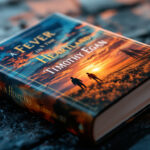The Frozen River by Ariel Lawhon Book Review
Ariel Lawhon’s The Frozen River blends historical fiction and mystery, bringing readers into the life of Martha Ballard, an 18th-century midwife in 1789 Maine. This book is perfect for fans of historical mysteries, especially those curious about women’s roles in early America. The story unpacks the tension and challenges of the time through the eyes of a remarkable woman, weaving history with a gripping murder mystery.
Historical and Social Context of The Frozen River
Set just after the American Revolution, Maine’s rugged and evolving society forms the backdrop of this novel. The book paints a vivid picture of the legal and social systems of the late 1700s, with particular attention to how women fit into these structures.
Martha Ballard was a real person whose extensive diary records provide a detailed lens into her daily life and community. These diaries shape the foundation of the novel, offering readers authentic insight into a world where women had limited rights yet played crucial roles in family and society.
Gender roles during this era were strictly defined. Women were expected to maintain households and care for family members, yet Martha’s story highlights exceptions—showcasing a woman who held legal and social influence rare for her sex at the time. It’s a reminder that history often overlooks significant female contributions, though they quietly shaped communities.
Martha Ballard: The Midwife and Her Role in Society
Martha’s job as a midwife was more than a profession—she was a pillar of her community. As a woman who was literate and kept detailed records, she earned a rare degree of respect and legal voice in her small town. Unlike many women of her time, she could testify in court and take part in legal matters, which shows how her expertise was indispensable.
Her navigation through societal expectations and legal boundaries reveals a nuanced view of gender and power. Martha worked tirelessly, bridging the private world of women with the occasionally public world of justice and evidence.
Insights into Early American Justice and Gender Dynamics
The novel’s mystery sheds light on the limitations women faced within the justice system. Martha’s diary not only chronicles births and deaths but becomes a crucial piece of evidence in a murder investigation. The procedures and attitudes reflected in the courtroom scenes reveal a society reluctant to grant women legal authority but forced to acknowledge their essential testimonies.
Her position as a midwife, combined with her detailed records, offered a unique lens on justice at the time. The book captures how fragile and biased the legal system could be, especially toward women, while showing Martha as a determined advocate for truth.
Plot Overview and Narrative Style
At the story’s core lies a murder mystery sparked by the discovery of a dead man in the Kennebec River. Lawhon skillfully blends fact and fiction, keeping the suspense alive without revealing too much too soon. The plot unfolds not in a straight line but by shifting between moments past and present, gradually revealing deeper layers of the characters and their world.
This narrative style allows readers to understand the social fabric of Martha’s time while piecing together clues alongside her. The result is an immersive and thought-provoking read that keeps interest high.
The Murder Mystery and Its Role in the Story
The mystery revolves around who the dead man was and how he came to be in the river. Martha’s involvement in the investigation highlights the delicate balance the book strikes between historical accuracy and fictional intrigue. It isn’t just a whodunit; it’s a window into early American life, showing how even a small town dealt with crime and suspicion.
Non-Linear Storytelling Approach
Lawhon’s choice to move backward and forward through time allows a fuller picture of characters and social dynamics. The reader uncovers aspects of Martha’s life and the town gradually, reflecting how history itself is often pieced together. This approach adds depth and keeps the storytelling fresh and engaging.
Themes and Reception
Several key themes run through The Frozen River. Justice, women’s empowerment, societal hierarchy, and resilience stand out. Martha’s story serves as a reminder of women’s quiet strength amid hardship and social limits.
Critics have praised the book for its well-drawn characters and rich historical detail. The feminist perspective shines through naturally, offering readers a compelling heroine who refuses to be sidelined. This book appeals especially to those who enjoy layered historical stories that challenge the status quo.
Justice and Women’s Rights in The Frozen River
Justice in the story isn’t just about solving a crime—it’s about Martha’s ongoing fight for recognition and fairness within a flawed system. Her role in advocating for victims and standing up in court reveals the legal obstacles women faced and the courage needed to overcome them.
Critical Response and Reader Appeal
Readers and reviewers alike have highlighted the novel’s suspenseful plot combined with historical fidelity. Many appreciate how Lawhon honors a real woman’s story while crafting a mystery that keeps you guessing. For anyone into historical mysteries or feminist tales, The Frozen River offers a satisfying blend of both.
For more perspectives on similar works, check out this review of The Frozen River by Ariel Lawhon and this thoughtful analysis at She’s Becoming Bookish.
Conclusion
The Frozen River book delivers a powerful mix of history and mystery, inviting readers to explore a lesser-known chapter of American life through the eyes of Martha Ballard. If you enjoy stories about strong women facing impossible odds in a richly detailed past, this book is well worth your time. It stands out as a unique story blending history, crime, and the indomitable spirit of an extraordinary woman.
For fans of nonfiction memoirs about impactful women in history, exploring titles in the nonfiction memoir category might provide equally captivating reads.







